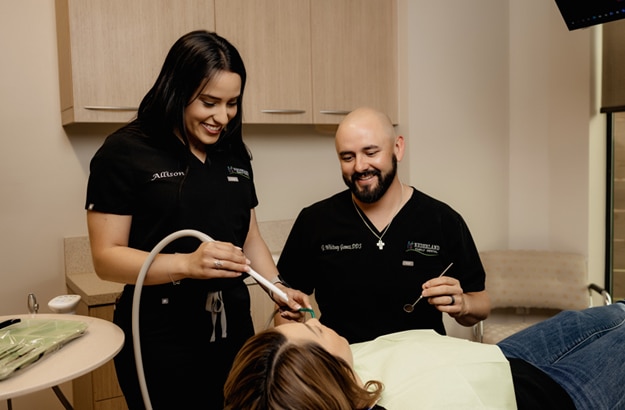
Advanced Care for Your Smile
How Laser Dentistry Works and Aftercare
Lasers have transformed modern dentistry, offering precise and effective treatments for a variety of dental issues. Unlike traditional surgeries that involve scalpels and sutures, laser surgery is stitch-free and promotes faster healing.
In laser dentistry, light energy is utilized to address specific oral health issues without the need for cutting. This gentle approach ensures a comfortable experience for patients. While some mild soreness may occur for a day or two post-treatment, over-the-counter medication is typically sufficient to manage any discomfort. Interestingly, many patients in Nederland have reported not requiring any medication after laser dentistry procedures.
Common applications of laser dental procedures include:
- Frenectomies (lip and tongue-ties)
- Treatment for gummy smiles
- Management of periodontal disease
- Canker sore treatment
Is it safe to undergo laser dentistry?
Laser dentistry revolutionizes soft tissue surgeries by eliminating the need for traditional cutting and stitches. Using laser light energy, we can precisely remove diseased, damaged, or excess tissue while preserving healthy tissue.
Compared to traditional methods, laser treatment is faster, reducing time spent in the dental chair. Patient comfort is our top priority, and we ensure you are completely numb before starting the procedure.
By utilizing laser light energy, patients can enjoy various benefits, such as:
- Accelerated healing
- Enhanced comfort
- Reduced bleeding
- Improved precision
- Tissue regeneration
- Effective infection control
- Expedited healing of canker and cold sores
Frenectomy available in Lumberton, TX
- Snoring
- Infants nodding off during feeds
- Milk dribbling from the corners of the infant's mouth
- Gas or colic
- Weight gain challenges
Gum Sculpting: Fix Your Gummy Smile
Top Periodontal Disease Treatment Solution
- Halitosis (bad breath)
- Tooth mobility (loose teeth)
- Gingivitis (red or swollen gums)
- Gingival bleeding (bleeding gums)
- Intermittent or persistent dental pain (periodic or recurring toothaches)
- Periodontal pocket formation (gum pocketing)
- Tooth elongation (elongated tooth appearance)


